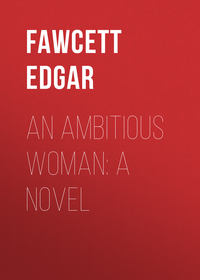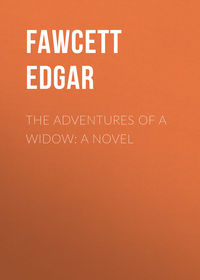 полная версия
полная версияSome Reminiscences of old Victoria
Of the pioneer clergy I well remember Dr. Robson, Dr. Ephraim Evans, Rev. Mr. Pollard and Rev. Mr. Derrick. Of these I best remember Dr. Evans, as having been here so many years with his wife, daughter and son. It will be remembered by old timers the sad story of his son’s death by drowning which I will in a few words relate. He was very fond of gunning, and one afternoon in December he went off with his gun to shoot duck from the beach off Beacon Hill, which was the common practice in those days. Having shot one or two and not being able to get them any other way, he stripped off his clothes and swam out after them. This was a very bold thing to do, as the water is so cold there, and especially in December. It is supposed he got the cramps or got caught in the seaweeds where the ducks were shot from, and so was drowned. Not coming home at his usual time, search was made, and having been seen going to Beacon Hill, it was there the searchers found his clothes and gun on the beach that evening. The poor father seemed heart-broken, for he would not leave the spot, but walked up and down all night calling "Edwin! Edwin, my son!" In the morning they recovered the body under the seaweed. Great sympathy was felt for the parents, and I well remember the funeral on a snowy day, and the unusual number of friends who attended the funeral in the old Quadra Street Cemetery. The granite monument is still to be seen there.
In the view of Government Street in the early sixties here produced, may be seen marked with a X Theatre Royal. In this building, which then was used for theatrical productions, concerts and lectures, I heard the Rev. Morley Punshon, then president of the Wesleyan Conference, I think. He lectured on Macaulay, and was reciting from "Lays of Ancient Rome" when the fire bells rang, and in less than five minutes there were only a score or so left of his audience. He stopped an instant, proceeded, but finally stopped for good, saying that it was the first time he had ever had to stop one of his lectures for a fire. But when he was told that it might have been the home of any one of his audience and that it was the custom for citizens generally to assist the firemen (who themselves were volunteers), he continued his lecture to the end, and very interesting it was.
The first Methodist services were held in Judge Pemberton’s police court room on Bastion Square until the church on lower Pandora Street was finished. This church was built on the corner of Broad and Pandora on land given by Governor Douglas, and was considered just outside the city (1859), the tall pine trees being much in evidence a couple of blocks away. In order to get to the church you had to pass over a gully with water at the bottom; a sort of trestle sidewalk on stilts was afterward constructed until the gully was filled in. At this date the Methodists had the most pretentious church in the city. The basement was used for Sunday School, prayer meetings and lectures. I must not forget the tea meetings which were given in those days. They were presided over by prominent ladies of the congregation – Mrs. Trounce, Mrs. Donald, Mrs. Bullen, Mrs. McMillan, Mrs. Spencer and Mrs. N. Shakespeare – and the admission to these "tea fights," as they were termed generally, was $1.50, and well patronized they were at that price. I attended many, and I think I can see now the tables spread with good things, and those sitting at them, nearly all of whom have passed away. We were early birds in those days. Entertainments commenced at six o’clock and all over at ten. By the large view of Government Street in 1858 it will be seen how it has progressed. It was not metalled until 1859, and nearly all the buildings were frame. The first brick is now to be seen on the corner of Courtney Street, the "Windsor Hotel." Where the Empress Hotel now stands, and all the land to the south and east, was the upper part of James Bay, and mudflats, and at times not very savory. It was not until late in 1858, or 1859, that a bridge connected the north and south sides of James Bay, people having to walk around the bay eastwards. The population of James Bay District was very sparse. Trails instead of streets ran in all directions. Belleville Street, that is now so thronged with passengers to and from the C.P.R. steamers every day, was not then in existence, for the beach reached to the trees in the front of the Parliament Buildings. Where the new Pemberton block now stands, down to the corner of Government Street, was an orchard and vegetable garden. Across the street where the Five Sisters Block stands was a vacant lot with a log hut in the rear where the Hudson’s Bay Company baked bread for the citizens, four-pound loaves being twenty-five cents, and very good it was. From Mr. Harry Glide, who arrived in Victoria in 1856, and has lived near the Outer Wharf for fifty-four years, I have learned much of the condition of things previous to the inrush from California in 1858–1859. He says all James Bay District was covered with fir trees and all the land from the mouth of the harbor along Dallas Road to Beacon Hill was "Beckly Farm." He says there were quite a number of Cherokee Indians here, who came from their native place to the coast of British Columbia for work; most of them were over six feet and strongly built. It seems strange that they should have travelled so far from their homes for work. There were also many Kanakas here who came on vessels from Honolulu at odd times. They formed a small colony and located on Humboldt Street, then called Kanaka Row. I can remember them in 1859, one family attending Christ Church regularly. There are many buried in Old Quadra Street Cemetery. The first sheets of the Colonist were printed on the Hudson’s Bay Company’s wharf in a large shed or warehouse, and later on the paper moved to Wharf Street to about where the Macdonald Block now stands. This was fifty-two years ago, and our visiting friends can draw a comparison with what it then was, a small double sheet, to its Sunday issue of to-day, with its many illustrations. For the information of our visiting friends I might say that the Hudson’s Bay Fort shown in the view of "Government Street in 1858," enclosed the two blocks running south from the corner of Bastion (the brass plate on the corner will show this) to the corner of Courtney and westwards to Wharf Street. In this fort all hands took shelter at night at the date of its erection. In 1858 and for years later, the fort bell rang at six o’clock in the morning, when the gates at the east and west ends were opened, and at six o’clock in the evening they were closed. There were two large general stores, and many storehouses and barns inside, and at the stores you could buy anything from a needle to an anchor, from a gallon of molasses to the silk for a dress. I might say a deal more, but it might not interest those for whom this sketch is written. As it is, there are many repetitions of what I have already written in the Colonist and Times during the last six years.
The Metropolitan Methodist Church.
To-day, February 13th, the Metropolitan Methodist Church celebrates the fifty-third anniversary of its foundation as a congregation. It was exactly fifty-three years ago yesterday that the first Methodist missionaries, sent out by the Wesleyan Methodist Church of Canada, then part of the English Wesleyan conference, landed in Victoria. They were Rev. Dr. Ephraim Evans, his wife and family; Rev. Arthur Browning, Rev. Ebenezer Robson and Rev. Edward White, who also brought his family, one of his little sons being Rev. Dr. White, to-day Superintendent of Methodist Missions in this province. Rev. Dr. Robson was married shortly after his arrival. Of the gallant little party who faced the hardships of the then comparatively little known West with such tranquility and courage, all have now passed to their rest, Dr. Robson, the last survivor, dying less than a year ago in Vancouver.
The missionaries were received by Mr. John T. Pidwell, father-in-law of Mr. D. W. Higgins, and entertained in his home until they could secure permanent quarters. The following Sunday, February 13, service was held for the first time in the courthouse, and Rev. Dr. Robson subsequently went on to Nanaimo, where he found Cornelius Bryant, a young schoolmaster, who enjoyed the distinction of being the first member of the Methodist Church to set foot in British Columbia. He afterwards entered the Methodist ministry and died a few years ago. Rev. Edward White was quartered in New Westminster, where he established Methodism, and Rev. Mr. Browning, after acting as evangelist at different coast points, became the pioneer Methodist missionary in the Cariboo country.
Laying Corner-Stone.
During the following August the corner-stone of the first Methodist church in Victoria was laid. The building was situated at the corner of Broad and Pandora Streets, and was afterwards known as the Pandora Street Methodist Church. The stone was laid by Governor Douglas, and the building was dedicated the following May. Its usefulness was considerably lessened, however, by the building of the Metropolitan Methodist Church in 1890, which claims the honor of being the mother church of Methodism in the province, as, though the Pandora Street edifice was built first, it was not used for church purposes alone. The first pastor of the Metropolitan Church congregation was Dr. Evans, who was assisted by Rev. Dr. Robson, Rev. Arthur Browning and Rev. D. V. Lucas and Rev. Coverdale Watson (whose widow is now living in Vancouver), who acted as pastor for two separate terms.
Of the pioneers of Methodism, the following families were prominent and whom I counted among my friends: The Trounces and Donalds we had known in California; Sheriff McMillan and family, Captain McCulloch, Mr. and Mrs. T. S. Bone, Mr. and Mrs. Humber, Mr. and Mrs. Norris, Alderman Kinsman, and Father McKay, as he was affectionately termed by his intimate friends. All these have gone to their rest. Of those who are still with us, hale and hearty, are Mrs. Bullen, Mrs. Capt. McCulloch, Mr. and Mrs. David Spencer, Mr. and Mrs. N. Shakespeare, Mrs. Carne, Mrs. Branch, Mr. and Mrs. Pendray, Mrs. John Kinsman, Isaac Walsh, and others I cannot remember. I have attended many tea meetings held in the basement of the old church, presided over by these pioneer ladies.





